Jeff Garrison
Skidaway Island Presbyterian Church
1 Corinthians 15:29-34
May 12, 2019
I have been reading Chimamanda Adichie’s novel, Purple Hibiscus. Set in Nigeria during a politically unstable time, it’s the story of Kambili, a fifteen year old girl trying to make sense of this world. Her father is rich, generous, and a devout Catholic. But at home he’s abusive and a tyrant. He makes his children live by a strict schedule and demands perfection. The family have their prayer time, but even that is strict and void of joy.
When Kambili and her brother are sent to their aunt’s home one summer, they experience a different kind of faith. As with the dad, her aunty leads the family in prayer. Kambili is shocked at the difference. Like her father, she prays for those who don’t believe. But her father prays only that they be saved for the torment of hell, while her aunt prays that they be blessed. And she ends her prayer asking that they all experience peace and much laughter.[1] This shocks Kambili, for laughter was something she never considered of asking for in a prayer. While her aunty isn’t her mother, in a way her “motherly touch” opens up a new way of understanding faith.
I hope you have had such mothers in your life, whether they were your birth mother or another woman like an “aunty”, who helps you experience the hope of our faith. My mother grew up poor and it made her sensitive to the needs and the feelings of others. She expected her children to always be kind to others. It seems, sometimes, that we learn about the gentleness of our faith from women. We should cherish such teachings for our faith is not grounded in judgment and fear, but in life, abundant life, everlasting life. This is why the resurrection, as we going to see today, is so important to our faith.
In my sermon today, I am going to continue looking at the 15th Chapter of Paul’s first letter to the church in Corinth, the resurrection chapter. Read 1 Corinthians 15:29-34.
###
There are those who see the resurrection as a “pie-in-the-sky” doctrine that allows us to endure life on earth, kind of like Karl Marx’s critique of religion being the opium of the masses. But for the Apostle Paul, this is not the case. The resurrection makes a difference in his life in the present. It’s why he can be so fierce and bold to act.
Today we are looking at the center of Paul’s argument for the resurrection. This is a rather problematic passage, especially the first verse which implies there are those who are being baptized for those who have already died. So let’s start out by digging into the text here. This is the only place there is any mention of baptizing the dead in the New Testament, which creates a problem. Should we be doing this, we might wonder? I don’t think so. The only groups who have baptized for the dead have always been considered heretical sects.[2] So what does this mean? No one really knows. As Kenneth Bailey points out in his commentary on First Corinthians, there are at least forty different interpretations of what this passage might mean.[3] But since it is the only place it occurs, we can’t be too sure.
But here’s a possibility. Perhaps Paul refers to a conversion of someone after the death of a believer. For example, someone in the faith dies: perhaps a spouse or a parent. The non-believing spouse or child then decides to be baptized and to become a believer in part in the hope to be reunited with their loved one after the resurrection. To get to the point Paul is making, if there is no resurrection, such an action would be foolish.[4]
The only religious group I know of today who baptize for the dead are the Mormons. But their cosmology, their worldview, doesn’t conform to the Christian tradition—be it Protestant, Catholic or Orthodox. Essentially, they believe that salvation comes through their particular organization, which is why they think even the dead need to be baptized into their church. But we don’t believe that. For us, baptism is not a requirement for salvation; it’s a sign of our salvation which is grounded, not in the church, but in Jesus Christ. We focus on him: on his death and resurrection. Paul is driving this point home in this section of First Corinthians.
From how this verse reads, Paul never says if he agrees or disagrees with whether or not the dead should be baptized.[5] Instead, he is using such a practice to bolster his argument that if there is no resurrection, the rest of the faith doesn’t matter. If God doesn’t have the power to bring Jesus from the tomb to life, God won’t have the power to bring us to life and, as he said earlier in the chapter, our faith is in vain.[6] Again, for Paul, the resurrection is not a “pie-in-the-sky” doctrine, but one that has implications for how he lives his life in the present.
Paul is getting to the heart of the meaning of the resurrection here in the middle of this chapter. What difference does the resurrection make?” Paul essentially asks. His answer: “it makes all the difference in the world.” Because of the resurrection, we can face life with confidence and should live lives worthy of this gift.
Notice how Paul builds his case, reaching a peak at verse 31 with his boast of Jesus Christ, in whose death we’re called to die through baptism so that we might live eternally with him… For Paul, everything is focused on the Lord. On both sides of this proclamation, Paul notes the danger the Corinthians and he face daily for their belief in Jesus Christ. And then on the outside of that, Paul is almost dripping in sarcasm as he begins and ends with a statement that includes “if the dead are not raised?” If there is no resurrection, why bother to do all this stuff? If there is no resurrection, why don’t we throw a party, eat and drink, for tomorrow we may die. But Paul doesn’t believe this as he shows in this central statement, his profession of faith in Jesus Christ. Therefore, he concludes with additional suggestions about how we’re to live our lives.
In verse 32 Paul suggests that if it weren’t for the resurrection, he’d not be fighting with wild animals in Ephesus. As we look back on this from our perspective, we recall Roman circuses and it is easy to imagine Paul fighting lions like other Christians who were taken into the coliseum in Rome. However, the practice of feeding Christians to wild animals in the coliseum didn’t start until a century later.[7] So what might Paul be referring to here?
Although Paul spent more time in Ephesus that anywhere else in his missionary journeys and wrote this letter from there, Ephesus was a difficult place to be a Christian missionary.[8] We see this in Acts, where the silversmiths in Ephesus have a problem with Paul’s preaching.[9] Paul’s message is bad for business, for they make their living selling statues of gods and goddesses. If such gods don’t exist, why would anyone buy such a statue? This led to some difficulty for Paul and his ministry in Ephesus, a conflict that was like fighting wild animals for he may well have been fearful for his life. It wouldn’t have taken much for one of the merchants or craftsmen whose business was suffering to arrange for Paul’s body to be found floating dead in the harbor.
Paul’s point is that because of the resurrection, he doesn’t have to worry about his own life. In his letter to the Romans, Paul shows this confidence when he writes: “If we live, we live to the Lord, and if we die, we die to the Lord, so then whether we live or whether we die, we are the Lord’s.”[10]
Again, for Paul, everything is focused on Jesus Christ. And it should be like that for us, too. Faith in the resurrection allows us to be committed disciples, without the fear of death.
After showing the importance of the resurrection in our lives, Paul concludes this section with two short proverbs. In the first, “Do not be deceived: ‘Bad company ruins good morals,’” Paul is possibly quoting the 3rd Century BC Greek playwright Menander. Just before this quote, Paul flippantly quotes from Isaiah: “Let us eat and drink, for tomorrow we die.” Paul, throughout this letter, draws upon multiple texts so that there is something familiar to both the Greeks and the Jews in Corinth who are reading his letter.[11] Paul wants to heal the divisions in Corinth and this is just another attempt at doing that—quoting two different sources, so that each group would have something familiar to help their understanding. Paul’s use of sources supports Christian preaching that draws on sources outside the Biblical canon for illustrations. Truth, wherever found, can be used to support the ultimate Truth.
Paul’s ending to this section of his letter reminds us there needs to be an ethical response on our behalf because of the resurrection. Because we have been promised this incredible gift, we should live righteously, avoiding evil and striving to do what is honorable.
Throughout this letter, Paul has pointed to the corruption and sin in the Corinthian Church, so his tag-on here comes as no surprise: “I say this to your shame,” Paul notes for the second time in this letter.[12] Paul expects the Corinthians to change. They are to unite and get over their divisions.[13] They are no longer to put up with outrageous sin.[14] They are not to make a mockery of the Lord’s Supper and they are to worship in an orderly manner.[15] If they accept and believe in the resurrection, they will change and live in a way that honors what God has done for them in Jesus Christ.
Does the resurrection make a difference in your life? It should make all the difference in the world; it should give us the boldness to live for Jesus. But does it? Reflect on the resurrection this week and ask yourself, what difference it makes? Hopefully, you will discover, like Paul, the importance of a core document of the faith that we’ll profess in a few minutes when we say the Apostles’ Creed. When you say the Creed this morning, focus on those last clauses: “I believe…. in the resurrection of the body and the life everlasting.” Amen.
©2019
[1] Chimamanda Ngozi Adichie, Purple Hibiscus (New York: Random House, 2003), 127.
[2] William F. Orr and James Arthur Walther, First Corinthians: The Anchor Bible (Garden City, NY: Doubleday, 1976), 335.
[3] Kenneth E. Bailey, Paul Through Mediterranean Eyes: Cultural Studies in 1 Corinthians (Downers Grove, IL: Intervarsity Press, 2011), 449.
[4] Bailey, 450, agrees with G. G. Findlay (1900) and Joachim Jeremias (1960), who both independently of each other argued for this interpretation of the verse.
[5] Hans Conzelmann, 1st Corinthians: Hermeneia (Philadelphia: Fortress, 1975), 275.
[6] 1 Corinthians 15:14.
[7]Orr and Walther, 338.
[8] See Bailey, 452.
[9] See Acts 19:23-41
[10] Romans 14:8
[11] Bailey, 453. See Isaiah 22:13.
[12] 1 Corinthians 6:5, 15:34.
[13] Focus of 1 Corinthians 1-4:16.
[14] See 1 Corinthians 5.
[15] See 1 Corinthians 11-14.
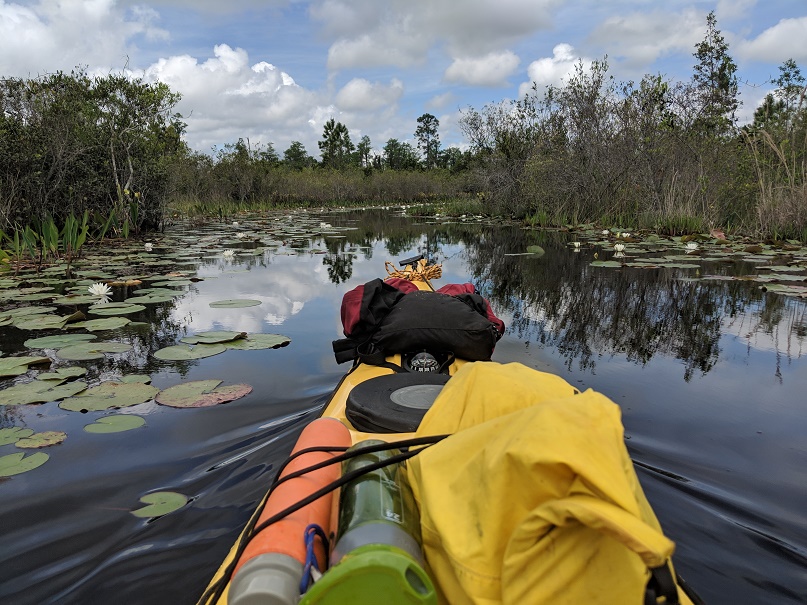
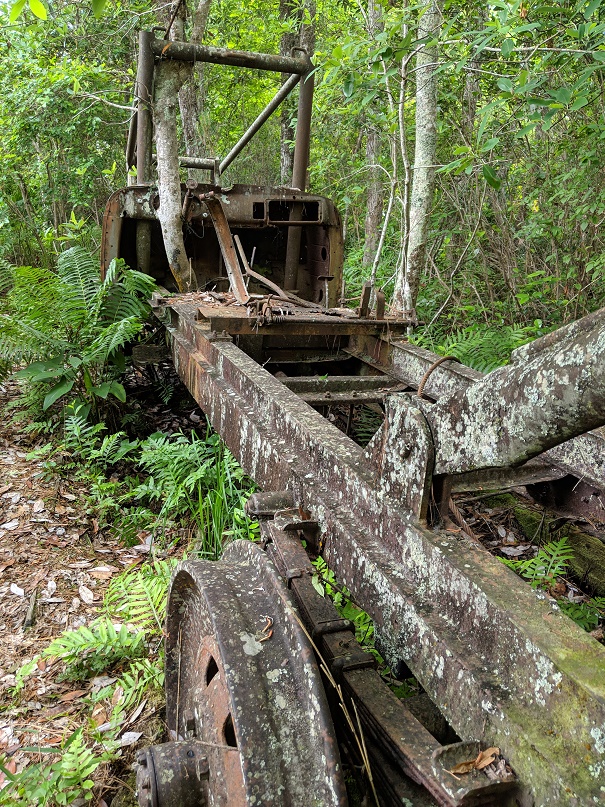
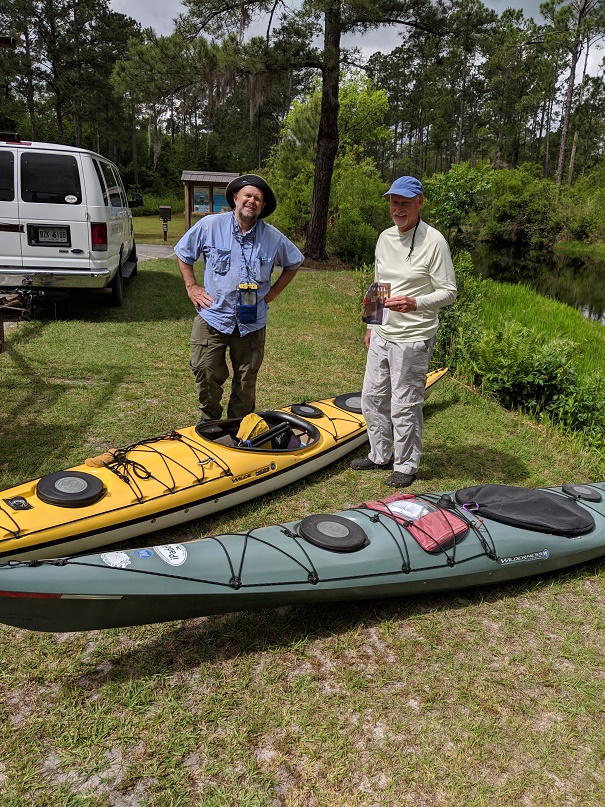

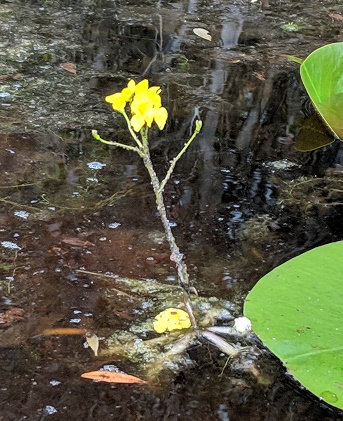 It’s good that we didn’t explore because after the turn-off to Double Lakes, the trail becomes more difficult. In places, lily pads and other weeds fill the channel and often seem to grab and hold on to your paddle. It’s a workout, but we keep paddling. The lily pads include the elegant blooming white lotus plants and some of the more bland yellow blooms. Along the sides of the path, where it is open, are hooded pitcher plants, purple swamp irises and pickerel weed with its purple torch-like flowers. At places, bladderworts, odd flowering plants that grow in water, are seen. Like the pitcher plants, they too are carnivorous. With so many insect eating plants, you’d think bugs wouldn’t be a problem. The abundance of these plants are an indication of the poor soil, so they have evolved to obtain nutrients from other sources. And there seems to be plenty of mosquitoes and biting flies to feed these plants, as we’ll later experience.
It’s good that we didn’t explore because after the turn-off to Double Lakes, the trail becomes more difficult. In places, lily pads and other weeds fill the channel and often seem to grab and hold on to your paddle. It’s a workout, but we keep paddling. The lily pads include the elegant blooming white lotus plants and some of the more bland yellow blooms. Along the sides of the path, where it is open, are hooded pitcher plants, purple swamp irises and pickerel weed with its purple torch-like flowers. At places, bladderworts, odd flowering plants that grow in water, are seen. Like the pitcher plants, they too are carnivorous. With so many insect eating plants, you’d think bugs wouldn’t be a problem. The abundance of these plants are an indication of the poor soil, so they have evolved to obtain nutrients from other sources. And there seems to be plenty of mosquitoes and biting flies to feed these plants, as we’ll later experience.
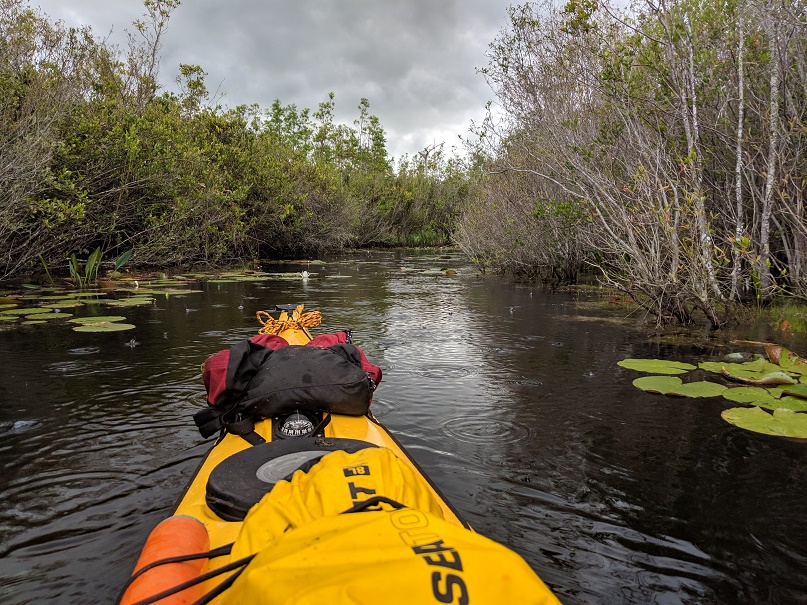
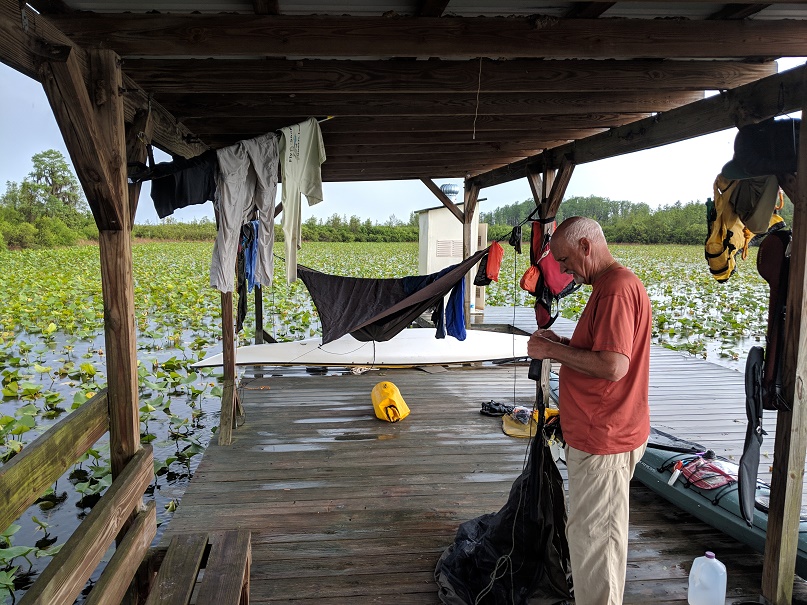
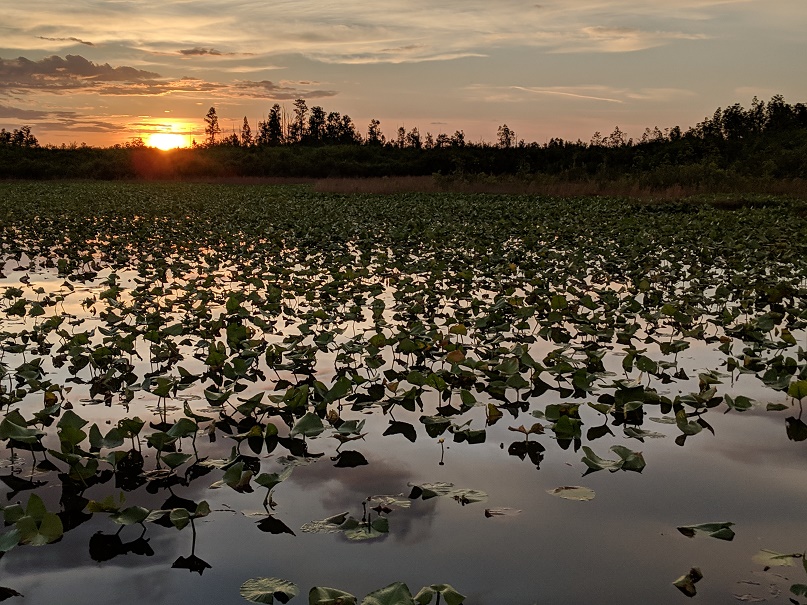
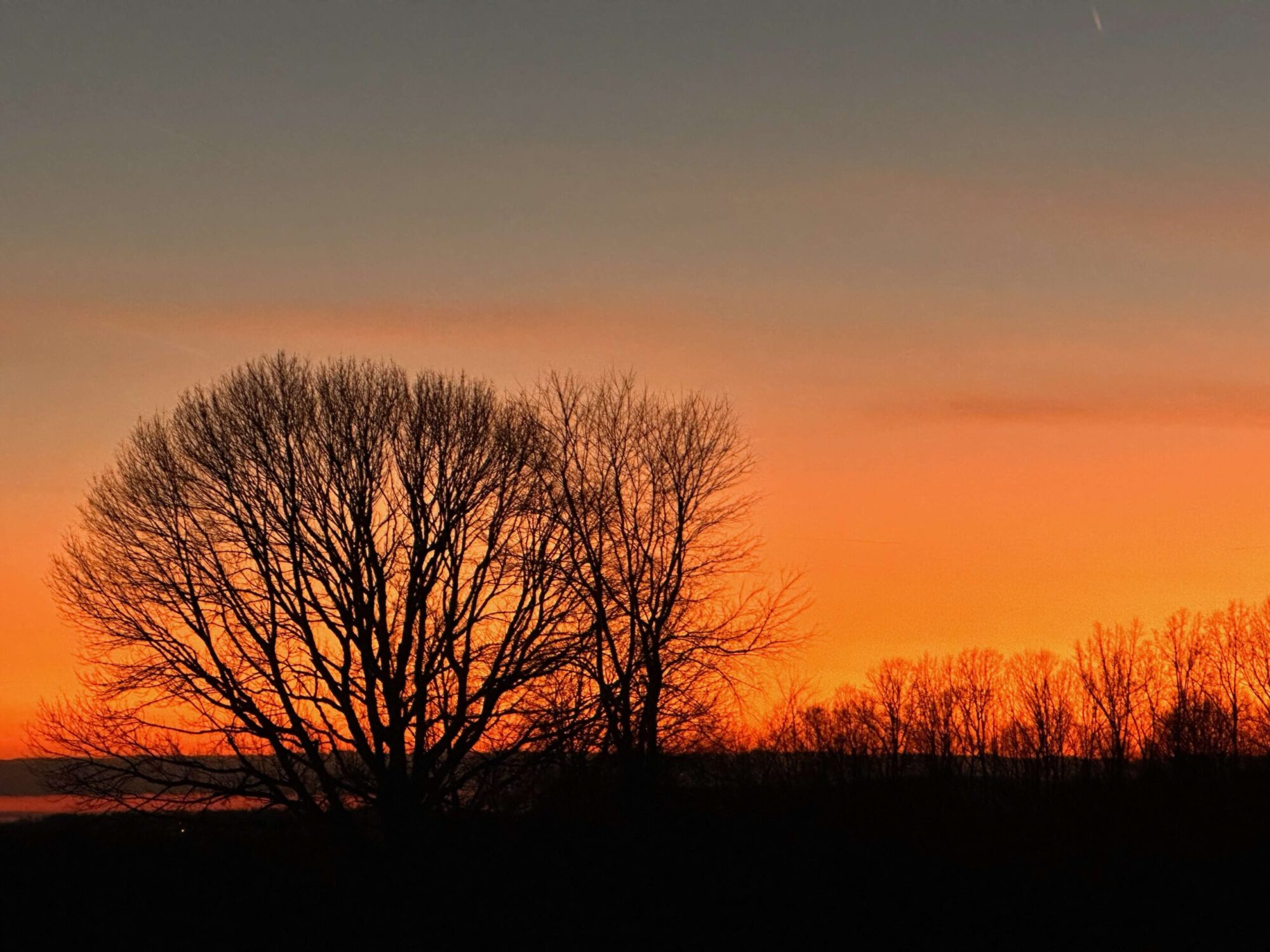
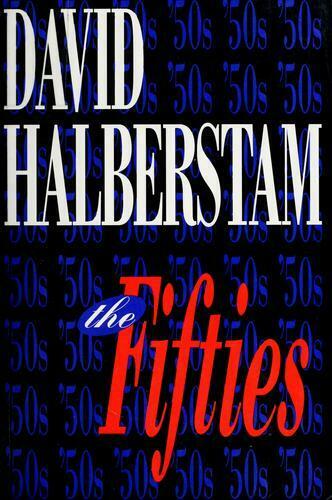 David Halberstam, The Fifties (1993, New York: Ballantine Books, 1994), 800 pages including index’s and notes, plus 32 pages of black and white prints.
David Halberstam, The Fifties (1993, New York: Ballantine Books, 1994), 800 pages including index’s and notes, plus 32 pages of black and white prints. Jeff Garrison
Jeff Garrison
 I woke up at 6 AM to the sounds of the Star Spangled Banner blaring from the radio. It was the day after Labor Day, 1988. KECH with its whopping 58 watts of amplification began the day’s broadcast up and down the Wood River Valley. The station was off air between midnight and 6 AM, so instead of setting an alarm clock, I just left the radio on at night. I went to sleep to music and woke feeling patriotic. I had become accustomed to getting up in this manner during the summer at Camp Sawtooth in the Boulder Mountains of Idaho. As the music played I’d wash up, brush my teeth, dress, and head down to the dining hall where I’d build a fire to ward off the morning chill. Throughout the summer, when I came into the dining hall, the cooks would already be in the kitchen, fixing breakfast. The smell of coffee perking and bacon frying would fill the air. It had been a near perfect summer. But this morning was different.
I woke up at 6 AM to the sounds of the Star Spangled Banner blaring from the radio. It was the day after Labor Day, 1988. KECH with its whopping 58 watts of amplification began the day’s broadcast up and down the Wood River Valley. The station was off air between midnight and 6 AM, so instead of setting an alarm clock, I just left the radio on at night. I went to sleep to music and woke feeling patriotic. I had become accustomed to getting up in this manner during the summer at Camp Sawtooth in the Boulder Mountains of Idaho. As the music played I’d wash up, brush my teeth, dress, and head down to the dining hall where I’d build a fire to ward off the morning chill. Throughout the summer, when I came into the dining hall, the cooks would already be in the kitchen, fixing breakfast. The smell of coffee perking and bacon frying would fill the air. It had been a near perfect summer. But this morning was different. I dreaded getting out of bed. The cooks were gone for the season. I had to fix my own coffee. Yesterday, the last weekend group for the summer had left and camp became eerily silent. If you have ever worked at camp for a summer, you’ll know the feeling I’m expressing. There were only three of us left in that canyon, and we’d all be heading out after lunch. The morning would be busy draining pipes and closing up the camp for winter. When it came time to leave, we’d lock the buildings and gates and our summer in the valley under the tall lodgepole pines between even taller mountains would be over.
I dreaded getting out of bed. The cooks were gone for the season. I had to fix my own coffee. Yesterday, the last weekend group for the summer had left and camp became eerily silent. If you have ever worked at camp for a summer, you’ll know the feeling I’m expressing. There were only three of us left in that canyon, and we’d all be heading out after lunch. The morning would be busy draining pipes and closing up the camp for winter. When it came time to leave, we’d lock the buildings and gates and our summer in the valley under the tall lodgepole pines between even taller mountains would be over. After listening to the news and the weather (it was below freezing in the mountains, but would warm up and be another sunny day in paradise) I reluctantly crawled out of bed. I made coffee for Jack and Evelyn, our caretaker and his wife. I laid a fire in the wood stove one final time.
After listening to the news and the weather (it was below freezing in the mountains, but would warm up and be another sunny day in paradise) I reluctantly crawled out of bed. I made coffee for Jack and Evelyn, our caretaker and his wife. I laid a fire in the wood stove one final time. Furthermore, Storey County, in which Virginia City sits, had legalized prostitution, a troublesome idea that made me wonder how I’d relate as a pastor, a public representative of God. Finally, even the drive to Virginia City seemed daunting. Much of it was on two-lane roads through mountainous deserts. The last leg included the infamous forty-mile desert where there isn’t a drop of water to be found. I’d just read a book on this stretch the pioneers dreaded and even though I’d be flying through that part of the trip at freeway speeds, there was something about going through this desert that made me nervous. It didn’t get any better the next morning, when I stopped in Lovelock at the edge of this desert and noticed one of my tires going flat. I took it to a shop and sure enough there was a nail in the rubber. It was good I found it when I did; however, it seemed a bad omen. Have you ever been there where you just dreaded what’s next?
Furthermore, Storey County, in which Virginia City sits, had legalized prostitution, a troublesome idea that made me wonder how I’d relate as a pastor, a public representative of God. Finally, even the drive to Virginia City seemed daunting. Much of it was on two-lane roads through mountainous deserts. The last leg included the infamous forty-mile desert where there isn’t a drop of water to be found. I’d just read a book on this stretch the pioneers dreaded and even though I’d be flying through that part of the trip at freeway speeds, there was something about going through this desert that made me nervous. It didn’t get any better the next morning, when I stopped in Lovelock at the edge of this desert and noticed one of my tires going flat. I took it to a shop and sure enough there was a nail in the rubber. It was good I found it when I did; however, it seemed a bad omen. Have you ever been there where you just dreaded what’s next? We have a God who loves to surprise us. Ours is a God who invites those at the back of the line to come to the front. He’s a God of love who’s willing to forgive and to allow us a chance to start afresh. He’s a God of protection and refuses to abandon us. He’s a God of glory who shares his majesty through the beauty of a sunrise or a rainbow after a thunderstorm. God can take what we dread and provide a memorable experience. And the resurrection is the ultimate example.
We have a God who loves to surprise us. Ours is a God who invites those at the back of the line to come to the front. He’s a God of love who’s willing to forgive and to allow us a chance to start afresh. He’s a God of protection and refuses to abandon us. He’s a God of glory who shares his majesty through the beauty of a sunrise or a rainbow after a thunderstorm. God can take what we dread and provide a memorable experience. And the resurrection is the ultimate example. We all dread death, don’t we, but our hope is in the resurrection, which can only be experienced after death. In the resurrection, God reverses our fortune and we’re changed from dead to eternal. Just don’t ask me how. It’s just God’s way. But before I go to what Paul has to say, I should note that such dread of change can be an issue in all areas of our lives. We even find ourselves having such feelings in the church. As people, it seems we like to resist change even though it’s the only thing certain in life… Yet, we’re always nervous about the future. This shows our lack of trust in others (which can be expected, for we’ve all been let down at one time or another). But it also displays a lack of trust in God. We seem to forget that God has things under control; it’s not really up to us.
We all dread death, don’t we, but our hope is in the resurrection, which can only be experienced after death. In the resurrection, God reverses our fortune and we’re changed from dead to eternal. Just don’t ask me how. It’s just God’s way. But before I go to what Paul has to say, I should note that such dread of change can be an issue in all areas of our lives. We even find ourselves having such feelings in the church. As people, it seems we like to resist change even though it’s the only thing certain in life… Yet, we’re always nervous about the future. This shows our lack of trust in others (which can be expected, for we’ve all been let down at one time or another). But it also displays a lack of trust in God. We seem to forget that God has things under control; it’s not really up to us. As I said before reading this passage, Paul begins asking what probably had been a follow-up question by those who were denying the resurrection. “Just how are the dead raised, Paul? What kind of body will they have?” Paul doesn’t mince his words here and replies with a passionate response, “Fool.” You can’t be much more emphatic than that! He continues by noting what is planted as a seed has to “in essence” die (as it’s buried in the earth) in order to come to life as a new plant. He also notes there are different kinds of flesh and different kinds of bodies as he points to other animals and even to the heavens… We live in a wonderfully unique world.
As I said before reading this passage, Paul begins asking what probably had been a follow-up question by those who were denying the resurrection. “Just how are the dead raised, Paul? What kind of body will they have?” Paul doesn’t mince his words here and replies with a passionate response, “Fool.” You can’t be much more emphatic than that! He continues by noting what is planted as a seed has to “in essence” die (as it’s buried in the earth) in order to come to life as a new plant. He also notes there are different kinds of flesh and different kinds of bodies as he points to other animals and even to the heavens… We live in a wonderfully unique world. Next, Paul returns to the topic he’d brought up earlier in the chapter: Adam and Jesus. Adam is the man of dust. God created him as God created us. If there was any question about Christians believing in reincarnation, Paul negates such ideas here when he insists there is no spiritual beginning for us. This idea was no doubt prevalent in Corinth as it is found in Platonic thought. At the end of Plato’s classic work, The Republic, he describes how spirits leave one world to be born in this world.
Next, Paul returns to the topic he’d brought up earlier in the chapter: Adam and Jesus. Adam is the man of dust. God created him as God created us. If there was any question about Christians believing in reincarnation, Paul negates such ideas here when he insists there is no spiritual beginning for us. This idea was no doubt prevalent in Corinth as it is found in Platonic thought. At the end of Plato’s classic work, The Republic, he describes how spirits leave one world to be born in this world. But there is one who transcends the dust, the one who in Revelation is known as “the alpha and the omega, the first and the last, who is and who was and who is to come.”
But there is one who transcends the dust, the one who in Revelation is known as “the alpha and the omega, the first and the last, who is and who was and who is to come.” As followers of Jesus, we shouldn’t spend too much time fretting and worrying about the future. “Don’t worry about tomorrow,” Jesus tells us.
As followers of Jesus, we shouldn’t spend too much time fretting and worrying about the future. “Don’t worry about tomorrow,” Jesus tells us.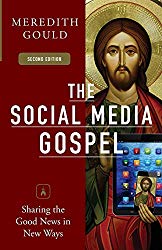
 Jeff Garrison
Jeff Garrison  The Sermon on the Mount begins in the fifth chapter of the Gospel of Matthew and continues for three chapters. We’re told Jesus is on a hill and the disciples and other followers have gathered around him. He begins teaching with a series of nine beatitudes: blessed are the poor in spirit, the meek, the peacemakers, and so on. Then, there’s a bridge between the beatitudes and the commands that fill out his sermon. This is the “you are” section, from which we will read today. There are two “you ares”: salt and light. I should also note that the “you” here is plural. Jesus is saying, “You folks,” or as we say down here, “y’all.” Y’all are the salt and the light. This isn’t only for individuals. This is a community task, it’s the role of the church, as we’ll see.
The Sermon on the Mount begins in the fifth chapter of the Gospel of Matthew and continues for three chapters. We’re told Jesus is on a hill and the disciples and other followers have gathered around him. He begins teaching with a series of nine beatitudes: blessed are the poor in spirit, the meek, the peacemakers, and so on. Then, there’s a bridge between the beatitudes and the commands that fill out his sermon. This is the “you are” section, from which we will read today. There are two “you ares”: salt and light. I should also note that the “you” here is plural. Jesus is saying, “You folks,” or as we say down here, “y’all.” Y’all are the salt and the light. This isn’t only for individuals. This is a community task, it’s the role of the church, as we’ll see. What does it mean today to be a light to the world? And what did this mean to those in the first century?
What does it mean today to be a light to the world? And what did this mean to those in the first century? The Koreans borrowed this idea from the West. In the old villages in Europe, a church and its steeple was the center of town. You could see the steeple from far off. In America, we adopted such ideas. Consider a New England village with the tall steeple in the middle. Or look at the downtown Savannah skyline, with large steeples rising high over the trees, providing visibility and, in many cases, a maintenance nightmare. The purpose is to keep everyone mindful of the church as the center of our lives, where together we focus and praise God. Jesus talks of a city built on a hill that can’t be hidden, so if you build a city in a valley, you put up a steeple to make it more visible.
The Koreans borrowed this idea from the West. In the old villages in Europe, a church and its steeple was the center of town. You could see the steeple from far off. In America, we adopted such ideas. Consider a New England village with the tall steeple in the middle. Or look at the downtown Savannah skyline, with large steeples rising high over the trees, providing visibility and, in many cases, a maintenance nightmare. The purpose is to keep everyone mindful of the church as the center of our lives, where together we focus and praise God. Jesus talks of a city built on a hill that can’t be hidden, so if you build a city in a valley, you put up a steeple to make it more visible. I’ve told you before about our family’s exile from North Carolina when I was 6 years old and how I spent the first three years of school in Virginia. I still remember one of the churches we attended there—Second Presbyterian Church in Petersburg. It was an old church in the downtown area that had endured much. During the Civil War, its tall steeple was hit by a Union canon ball.
I’ve told you before about our family’s exile from North Carolina when I was 6 years old and how I spent the first three years of school in Virginia. I still remember one of the churches we attended there—Second Presbyterian Church in Petersburg. It was an old church in the downtown area that had endured much. During the Civil War, its tall steeple was hit by a Union canon ball. As I pointed out, Jesus is making a transition from the blessings he’s offered to the more instructional part of the sermon. I encourage you to read these entire three chapters to see what’s happening. In a way, he’s giving this humble and struggling collection of people a great compliment. They are to be his light in the world. God chooses the marginal. The poor and the powerless are instilled with an important mission. Jesus, the light of the world, takes such a motley group and sets them off on an important assignment. Through our good deeds (we’re a part of this group), others watch and hopefully are impressed and seek out God. They, and we, are not to do good works to be praised, but so that our heavenly Father will be praised.
As I pointed out, Jesus is making a transition from the blessings he’s offered to the more instructional part of the sermon. I encourage you to read these entire three chapters to see what’s happening. In a way, he’s giving this humble and struggling collection of people a great compliment. They are to be his light in the world. God chooses the marginal. The poor and the powerless are instilled with an important mission. Jesus, the light of the world, takes such a motley group and sets them off on an important assignment. Through our good deeds (we’re a part of this group), others watch and hopefully are impressed and seek out God. They, and we, are not to do good works to be praised, but so that our heavenly Father will be praised. Note this: Jesus makes a point to say, “your heavenly Father.”
Note this: Jesus makes a point to say, “your heavenly Father.” In our Old Testament reading, we hear the story of the “fall.” In the story of the Adam and Eve eating the forbidden fruit. It wasn’t that they picked a bad piece of fruit, it was that they were trying to be like God as they disobeyed a direct command from the Almighty. Much of our knowledge is morally neutral. It becomes problematic only when we use it in the wrong manner or for the wrong reasons, such as playing God. Technology is full of examples. Nuclear energy can be used to treat cancer and produce power and it can be used to blow the planet up. The same can be said for the internet. It’s a great tool for research, but we can also spread untruths and confusion. And social media, it’s a great tool to connect with others, but we can also use it to spread gossip. We can use these tools to be a light to the world or, as there’s always a downside, to cast darkness.
In our Old Testament reading, we hear the story of the “fall.” In the story of the Adam and Eve eating the forbidden fruit. It wasn’t that they picked a bad piece of fruit, it was that they were trying to be like God as they disobeyed a direct command from the Almighty. Much of our knowledge is morally neutral. It becomes problematic only when we use it in the wrong manner or for the wrong reasons, such as playing God. Technology is full of examples. Nuclear energy can be used to treat cancer and produce power and it can be used to blow the planet up. The same can be said for the internet. It’s a great tool for research, but we can also spread untruths and confusion. And social media, it’s a great tool to connect with others, but we can also use it to spread gossip. We can use these tools to be a light to the world or, as there’s always a downside, to cast darkness. You don’t won’t to like the guy who was pulled over, arrested, and hauled off to jail for stealing a car. He protested continually. After an hour of checking his story, the police apologized. “I couldn’t believe it was your car,” the officer said. “You have all these bumper stickers about loving Jesus and following you to church. After you gave the finger, shouted obscenities, and laid on your horn at the driver who was obviously lost, I just assumed you had stolen the vehicle.”
You don’t won’t to like the guy who was pulled over, arrested, and hauled off to jail for stealing a car. He protested continually. After an hour of checking his story, the police apologized. “I couldn’t believe it was your car,” the officer said. “You have all these bumper stickers about loving Jesus and following you to church. After you gave the finger, shouted obscenities, and laid on your horn at the driver who was obviously lost, I just assumed you had stolen the vehicle.” As the church enters the technological world in which we live, I also encourage you, if you use such technologies, to do so in a way that will help further our light in the world. Online, we Christians can respectfully answer questions about our faith, we can offer comfort to those who grieve or live in fear, we can help meet the needs of others, we can help empower others to further God’s work, we can help create loving digital communities, and show the love of Jesus in a compelling ways.
As the church enters the technological world in which we live, I also encourage you, if you use such technologies, to do so in a way that will help further our light in the world. Online, we Christians can respectfully answer questions about our faith, we can offer comfort to those who grieve or live in fear, we can help meet the needs of others, we can help empower others to further God’s work, we can help create loving digital communities, and show the love of Jesus in a compelling ways. Just “liking” or “sharing” posts about our church helps us share our message with others. Don’t let this new world scare you. And there’s more you can do. Help a neighbor who is homebound reconnect with church through our streaming services. Feel free to share a gleaming you gathered from a sermon, or tell of your feelings of a piece of scripture, or how a hymn or choir anthem spoke to you. But whatever you do, do it in a way that will bring a smile to Jesus’ face and help us reflect his face in a positive way to the world. Remember, as we heard in the chancel drama, Jesus has no online presence, but yours. No blog, no Facebook page, but yours.
Just “liking” or “sharing” posts about our church helps us share our message with others. Don’t let this new world scare you. And there’s more you can do. Help a neighbor who is homebound reconnect with church through our streaming services. Feel free to share a gleaming you gathered from a sermon, or tell of your feelings of a piece of scripture, or how a hymn or choir anthem spoke to you. But whatever you do, do it in a way that will bring a smile to Jesus’ face and help us reflect his face in a positive way to the world. Remember, as we heard in the chancel drama, Jesus has no online presence, but yours. No blog, no Facebook page, but yours.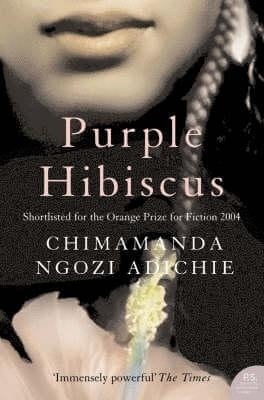 Chimamanda Ngozi Adichie, Purple Hibiscus (2003, New York: Random House/Anchor, 2004), 309 pages.
Chimamanda Ngozi Adichie, Purple Hibiscus (2003, New York: Random House/Anchor, 2004), 309 pages.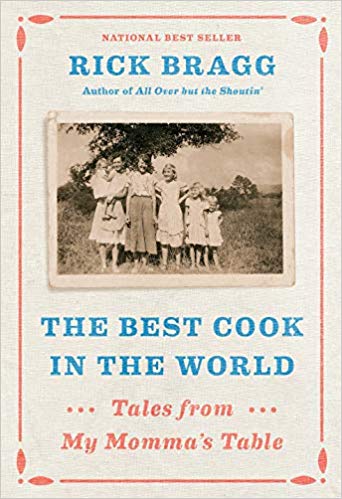 Rick Bragg, The Best Cook in the World: Tales from My Momma’s Table (2018), 19 hours and 17 minutes on audible.
Rick Bragg, The Best Cook in the World: Tales from My Momma’s Table (2018), 19 hours and 17 minutes on audible.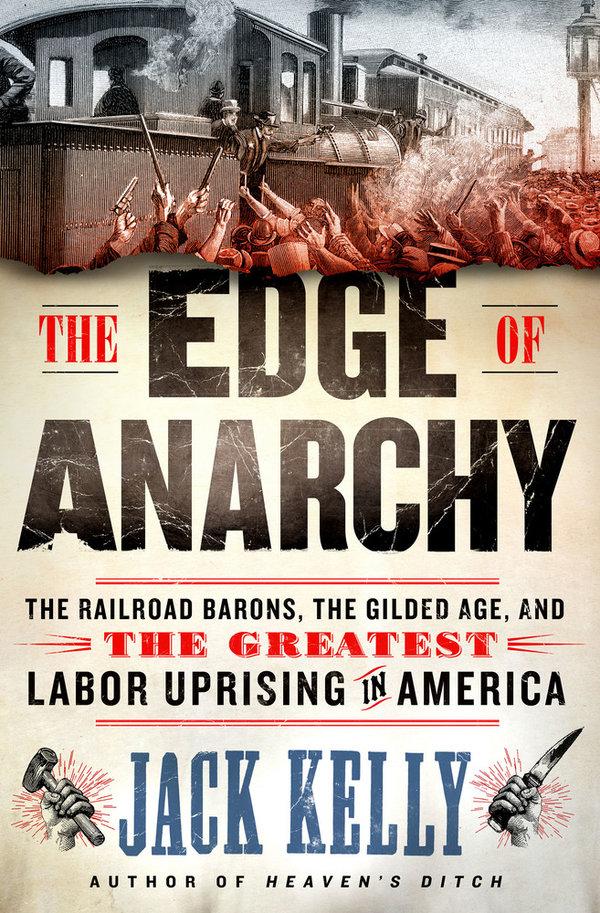 Jack Kelly, The Edge of Anarchy: the Railroad Barons, the Gilded Age, and the Greatest labor uprising in America (2019) 11 hours and 15 minutes on Audible.
Jack Kelly, The Edge of Anarchy: the Railroad Barons, the Gilded Age, and the Greatest labor uprising in America (2019) 11 hours and 15 minutes on Audible.